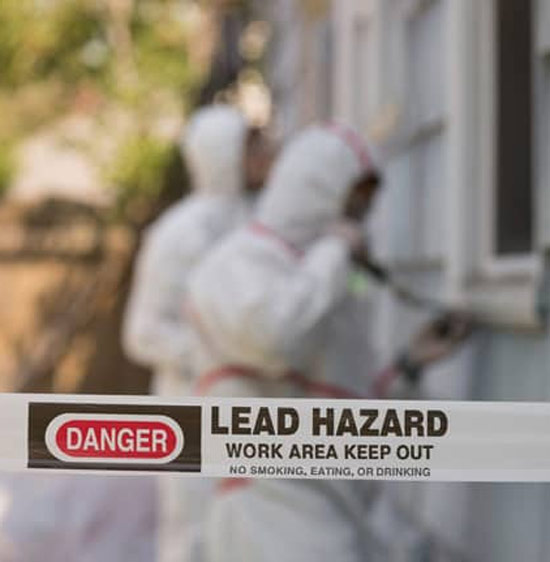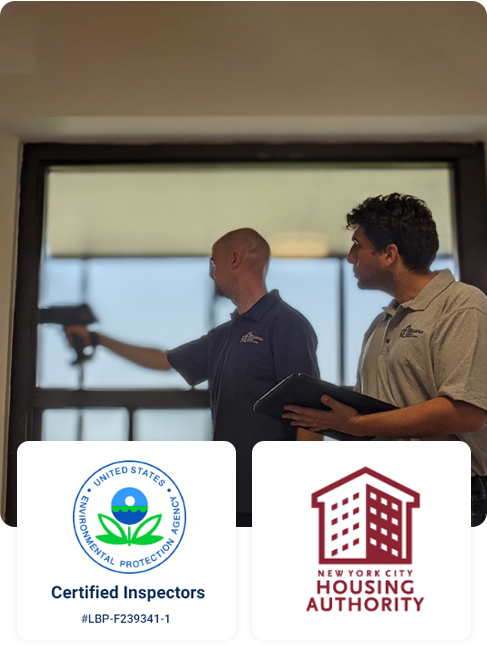Specialist Lead Violation Removal in NYC-- Guard Versus Health And Wellness Hazards
Best Practices for Making Sure Safe and Detailed Lead Violation Abatement
Addressing lead violation abatement needs a multi-faceted method to make sure both security and compliance. Initial assessments using advanced detection approaches such as XRF analyzers established the phase for a precise understanding of contamination levels. Incorporating appropriate control techniques, consisting of airtight obstacles and HEPA purification, coupled with the use of individual protective equipment (PPE) for employees, creates the backbone of a safe procedure. Precise cleanup protocols, featuring HEPA vacuuming and wet-wiping, are vital. It's the last clearance procedure, including complete evaluations and laboratory testing, that really confirms a lead-free environment, ensuring lasting safety. Exactly how do these methods interconnect to ensure detailed lead reduction?

Preliminary Analysis
Carrying out a preliminary evaluation is an essential very first step in lead offense reduction. This phase incorporates a detailed assessment of the residential or commercial property to identify the existence, degree, and details places of lead-based dangers. Qualified specialists, such as certified lead inspectors or run the risk of assessors, need to execute a comprehensive website inspection, utilizing tools like X-ray fluorescence (XRF) analyzers to properly find and determine lead focus in paint, dirt, dirt, and water.
The assessment needs to also include a review of the structure's background, previous records, and any kind of problems or health and wellness issues reported by owners - Lead Removal Contractors. Recording the findings thoroughly is necessary, as these records develop the basis for establishing a reliable reduction approach. An extensive evaluation additionally entails sampling and research laboratory analysis, which are essential to verify the existence of lead and overview subsequent activities
Furthermore, it is imperative to interact the outcomes transparently to all stakeholders, consisting of homeowner, lessees, and regulative authorities. By guaranteeing that the initial evaluation is carried out with accuracy and rigor, experts can lay a solid structure for a targeted and effective lead reduction procedure, inevitably protecting public wellness and making certain conformity with governing criteria.
Proper Control
Proper containment is important to protect against the spread of lead pollutants during reduction tasks. Properly managing control minimizes the risk of lead dust and particles migrating to non-work areas, therefore securing both the setting and people outside the instant work zone.

Regular examinations of the containment area are required to look for breaches or weaknesses in the barrier. Any recognized problems should be without delay resolved to preserve the integrity of the containment. By adhering to these techniques, abatement jobs can successfully regulate lead contamination and mitigate affiliated health and wellness dangers.
Employee Protection
Guaranteeing employee defense is extremely important throughout lead abatement jobs to stop work exposure to hazardous lead fragments. Crucial steps consist of using personal safety equipment (PPE) such as respirators, handwear covers, and full-body matches specifically made to obstruct lead dust and fumes. Workers should go through detailed training on the correct use and upkeep of PPE, including fit screening for respirators to guarantee optimum efficiency.
Engineering controls, such as local exhaust air flow systems, are critical in decreasing air-borne lead concentrations in the job atmosphere. Administrative controls need to additionally be executed, consisting of restricting the period of direct exposure and turning employees to decrease individual exposure times. Routine clinical surveillance and biological tracking are indispensable for early discovery of lead absorption, allowing timely intervention and treatment.
In addition, establishing a decontamination protocol is essential. Employees must comply with strict decontamination treatments prior to breaks and at the end of their change to stop lead dust from being carried outside the workspace. This consists of extensive hand and face cleaning with lead-specific cleansing agents and altering out of contaminated garments.
Thorough Cleaning
Maintaining a risk-free job atmosphere extends beyond worker security and includes careful cleanup to make certain lead fragments are completely removed from the website. The procedure of meticulous cleanup is crucial in stopping the recontamination of the abated area and guarding both existing and future occupants.
To attain an extensive cleaning, all workspace must be systematically decontaminated. This includes making use of specialized HEPA (High-Efficiency Particulate Air) vacuum and wet-wiping methods to catch and eliminate great lead dust that may have settled on surfaces. It is imperative to clean all horizontal surfaces, including floorings, home window sills, and kitchen counters, in addition to vertical surfaces that may have trapped lead particles.
Workers must wear ideal individual safety equipment (PPE) throughout clean-up to prevent exposure to residual lead dust. Utilized cleaning materials such as wipes, sponges, and wipe heads must be thrown away according like it to contaminated materials disposal regulations.

Final Clearance
Last clearance is the essential ending stage of lead reduction that figures out whether the site is risk-free for reoccupation. This critical action includes detailed assessment and testing to validate that all lead threats have actually been efficiently removed.

Final clearance testing not just protects future residents see this here however likewise guarantees Check Out Your URL compliance with neighborhood, state, and government guidelines. It serves as a documented validation of the abatement contractor's adherence to sector ideal methods. Ensuring a complete and effective last clearance is vital in guarding public health and promoting depend on in the abatement process.
Final Thought
Making sure safe and thorough lead offense abatement requires a diverse approach incorporating preliminary assessments with innovative detection methods, effective containment methods, strict employee security procedures, and careful cleaning procedures. The final clearance phase, featuring in-depth inspections and lab screening, is essential to validate conformity with EPA criteria. Adherence to these finest techniques ensures a secure environment for owners, minimizes wellness threats, and supports regulatory requirements, thereby advertising public health and wellness and safety and security in lead-affected locations.